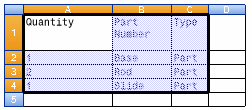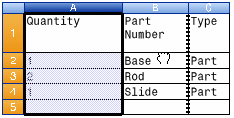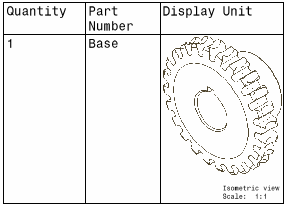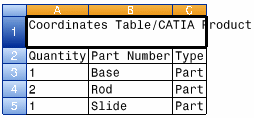Modifying a Table | ||||||||
|
| |||||||
Reorganize a Table
You can reorganize a table or its contents by means of inverting rows or columns, extending a table, transposing a table, inserting or deleting rows or columns and so on.
![]()
Resize Rows/Columns
You can change size of rows or columns.
Three methods are available.
Note that in case of a multi-selection, all columns/rows are resized identically.
| Important: The minimum value for a column width is twice the value of the horizontal margin of the cells. By default, this horizontal margin is valued 2mm. |
![]()
Merge/Unmerge Cells
You can combine two or more table cells located in the same row or column into a single cell. You can also separate or unmerge a merged cell.
![]()
Insert a View Representation
You can insert a view representation in a table cell.
| Important: This command is not available with the 2D Layout for 3D Design workbench. |

 appears.
appears.



 .
. on the border of the selection, then drag the selection to its new position.
on the border of the selection, then drag the selection to its new position.



